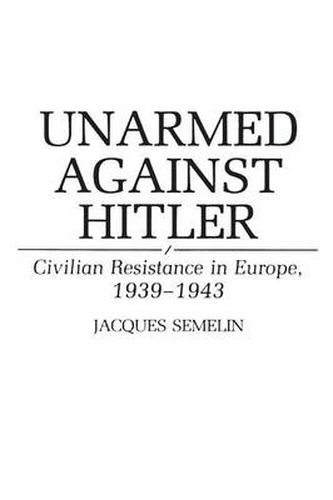Readings Newsletter
Become a Readings Member to make your shopping experience even easier.
Sign in or sign up for free!
You’re not far away from qualifying for FREE standard shipping within Australia
You’ve qualified for FREE standard shipping within Australia
The cart is loading…






Resistance in German-occupied Europe is generally understood as insurrectional violence. However, as soon as the war broke out, thousands of people engaged in civil disobedience—manifested through strikes, demonstrations, and the activities of medical organizations, courts of law, and churches. Jacques Semelin gathers evidence for the untold story of a movement that took place in France, Belgium, the Netherlands, Norway, and Denmark as well as Poland, Czechoslovakia, Romania, and Germany itself. A widespread campaign contested authority and paved the way for later armed resistance and the eventual defeat of the Nazis.
This study goes beyond historical interest. It is ethical in scope and deals with civilian strategy at large. To what extent is society prepared to face aggression, whether external or internal? As such, it is of value not only to military historians and other students of World War II, but it provides thoughtful approaches for political scientists and others concerned with contemporary issues of violence and civil disobedience.
$9.00 standard shipping within Australia
FREE standard shipping within Australia for orders over $100.00
Express & International shipping calculated at checkout
Resistance in German-occupied Europe is generally understood as insurrectional violence. However, as soon as the war broke out, thousands of people engaged in civil disobedience—manifested through strikes, demonstrations, and the activities of medical organizations, courts of law, and churches. Jacques Semelin gathers evidence for the untold story of a movement that took place in France, Belgium, the Netherlands, Norway, and Denmark as well as Poland, Czechoslovakia, Romania, and Germany itself. A widespread campaign contested authority and paved the way for later armed resistance and the eventual defeat of the Nazis.
This study goes beyond historical interest. It is ethical in scope and deals with civilian strategy at large. To what extent is society prepared to face aggression, whether external or internal? As such, it is of value not only to military historians and other students of World War II, but it provides thoughtful approaches for political scientists and others concerned with contemporary issues of violence and civil disobedience.